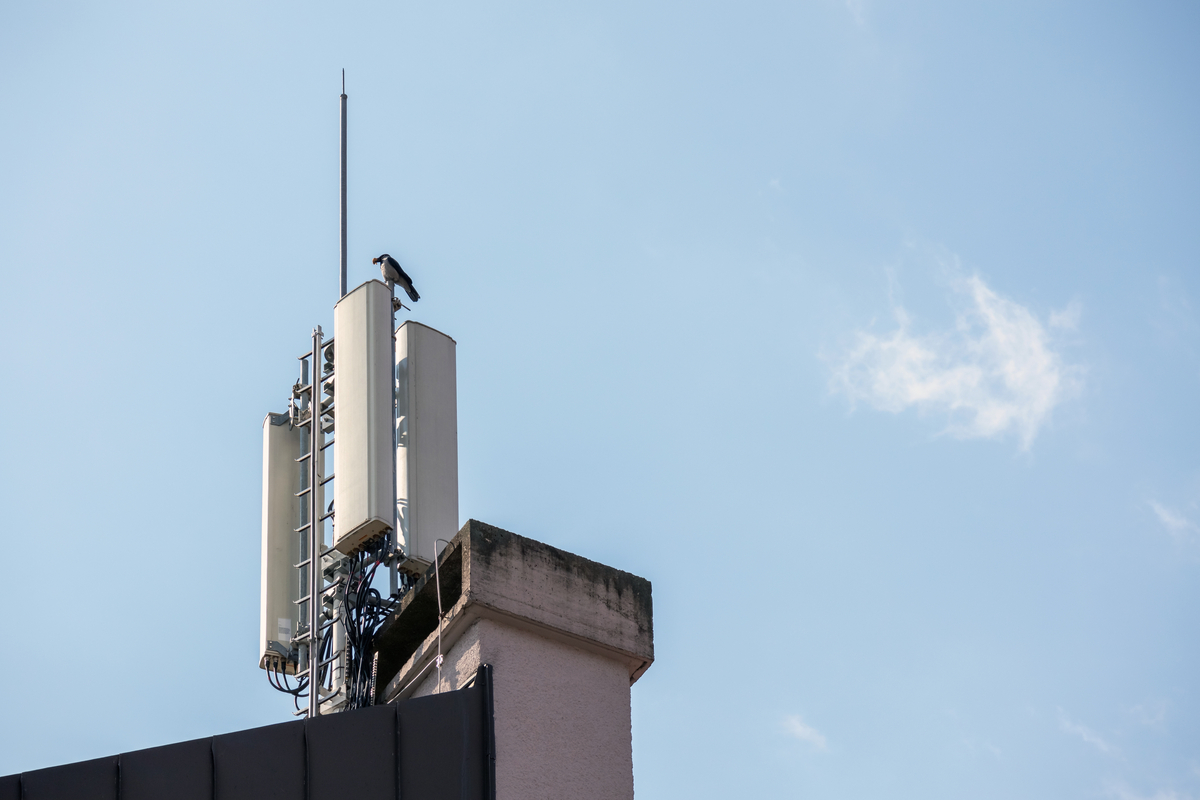The benefits of 5G connectivity are becoming increasingly prevalent in a wide range of IoT devices. The superior speeds, bandwidth and latency of 5G can provide a world of benefits for mobile phone and sensor applications, but the lower frequencies often used by these devices result in larger antennas.
For most modern devices, PCB space is at a premium. The available room for the volume of complex components in compact applications makes the right antenna implementation more important than ever. Luckily, technology advancements in this space are making it easier to create smaller antennas that can still be useful in the 5G market.
Why are 5G antennas typically larger than 4G?
The size of 5G antennas is directly related to their ground plane, which is the surface area they take up on the PCB of a device. The ground plane of an antenna on the PCB must be a quarter length of the specific wavelength in order to operate without negatively impacting its efficiency or total radiated power (TRP). As most 5G antennas typically use lower frequency bands they require larger ground planes in order to accommodate the larger wavelengths and perform efficiently. Because of this, 5G antennas are larger than previous generations of cellular antennas.
5G networks can operate on a range of frequencies for different antennas and applications, but a majority function on lower bands due to their longer range when compared with higher frequencies. Low and mid-band frequencies of up to 3.8 GHz are suitable to cover rural areas for applications like remote monitors and smart cities as the electromagnetic wave can travel long distances and through objects similar to 4G, but lacks the full bandwidth and speed capabilities 5G is capable of. Higher frequency bands of 26 GHz and above (also known as mmWave) can provide extremely high performance and speeds of up to 20 Gbps but at the cost of range and a lack of penetration.
As mmWaves of 5G can be blocked fairly easily, many IoT devices tend to stay on the lower end of the spectrum. But, there are technologies being developed and currently in use that bypass this issue, in turn allowing for the implementation of smaller 5G antennas.
5G technologies that enable smaller antennas
NR and mmWave
5G NR (New Radio) is a radio access technology method for cellular networks. It includes frequency range 1 (FR1) for 6GHz and below, as well as frequency range 2 (FR2) for millimetre wavelengths (mmWave) of 20-60GHz. As the high frequency of mmWaves enable large amounts of bandwidth, the problem of short range is solved by constructing many low powered base stations throughout a location like a city. As a device travels through the city it will regularly change connection to the closest active base station through a handoff.
5G NR enables 5G IoT devices to enjoy the benefits of high frequency connections without worrying about obstructions or a lack of range. As the wavelengths are shorter due to higher frequencies, 5G antennas can be smaller whilst still having good efficiency and great performance.
MIMO
Multiple-input, multiple-output antenna technologies are already widespread in 4G/LTE networks and consist of arrays of multiple transmitting and receiving antennas. This creates a circuit that enables data to travel over a wide area and at higher speeds. 5G connections use massive MIMO (mMIMO) which has a base antenna array with more dipoles than 4G/LTE MIMO that then connects to remote stations and devices. MIMO systems consist of transmitting and receiving signals resulting in the need for two antennas. Even though the individual antennas can be smaller, this can result in a larger overall PCB footprint than a single 5G antenna. With further research and development, the possibility of compact dual element MIMO antennas that use high frequency 5G connections at smaller overall ground planes could be seen in the near future.
mMIMO and beamforming are used in the manufacturing industry due to the ability to create stable and high-speed 5G connections throughout an entire factory. Automated devices and production lines demand low latency, fast speeds and high bandwidth, and mMIMO provides that whilst maintaining smaller 5G antennas.
5G antennas will still typically be larger than that of their cellular predecessors due to the nature of the network. Performance and efficiency are necessities when it comes to antenna integration and usually come before the importance of size. But with the technology of mmWaves and the potential future of MIMO, smaller 5G antennas will be able to operate well and be effective in compact IoT applications that enjoy the benefits of high speeds and bandwidth.
Choosing the right 5G antenna
5G provides a multitude of benefits for IoT devices. Greater speeds, bandwidth and reduced latency provide a world of possibilities in a range of applications. Now, the advancements in technology mean that size is becoming less of a complication in the design and development of these devices too. At Antenova, we’re helping innovative designers by providing small, high performance 5G antennas that are easy to integrate. You can be sure your device is future proof without losing all of your valuable PCB space.
To see our full range of 5G antennas or find out more about our full range, download our antenna comparison guide below.




